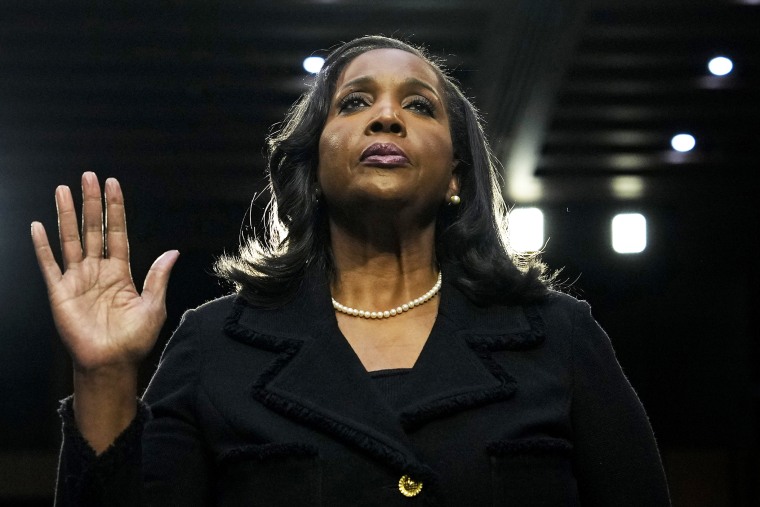A group of the country’s top economic leaders, including every living former Federal Reserve chair, filed an amicus brief with the Supreme Court on Thursday in support of Fed governor Lisa Cook, who President Donald Trump is seeking to remove.
The group, led former central bank chiefs Alan Greenspan, Ben Bernanke and Janet Yellen, said that “allowing the removal of Governor Lisa D. Cook while the challenge to her removal is pending would threaten that independence and erode public confidence in the Fed.”
The bipartisan group, which also includes former Treasury Secretaries Robert Rubin, Larry Summers, Hank Paulson, Jack Lew and Timothy Geithner, added that “the independence of the Federal Reserve, within the limited authority granted by Congress to achieve the goals Congress itself has set, is a critical feature of our national monetary system.”
As the U.S. central bank, the Federal Reserve is part of the U.S. government and its leaders are put in place by elected officials, but it also retains a considerable amount of independence that is meant to allow it to make decisions purely out of economic concerns rather than political ones.
The former economic officials said that an erosion of Fed independence could result “in substantial long-term harm and inferior economic performance overall.”
The Supreme Court is considering whether Trump has the authority to fire Cook, who has been a target for the White House for weeks as part of a broader pressure campaign to push the Fed to more aggressively cut interest rates.
Cook’s attempted removal stems from allegations of mortgage fraud, made in August by top Trump ally and Federal Housing Finance Authority Director Bill Pulte.
Cook has repeatedly denied the allegations and has not been charged with any crime. Documents reviewed by NBC News in mid-September appeared to contradict Pulte’s allegations.
Two courts have so far blocked Cook’s removal, leading Trump to ask the Supreme Court a week ago to allow him to fire her. In a court filing, Solicitor General D. John Sauer said a judge’s ruling that blocked the firing constituted “improper judicial interference.”
In a filing to the Supreme Court on Thursday, Cook’s lawyers said that “she committed neither ‘fraud’ nor ‘gross negligence’ in relation to her mortgages.”
Cook asked the court to deny Trump’s attempt to remove her while the case is argued.
The White House has repeatedly maintained that Trump “lawfully removed Lisa Cook for cause.”
The brief filed Thursday is a who’s who of the country’s top economic minds. Former Fed governor Dan Tarullo is also listed as a signatory to the brief, as well as the economists Ken Rogoff, Phil Gramm and John Cochrane.
Glenn Hubbard, Greg Mankiw, Christina Romer, Cecilia Rouse, Jared Bernstein and Jason Furman, a group who served as top officials on the White House’s council of economic advisers during Republican and Democrat administrations, also signed the brief.
None of the officials who signed the filing have served in either of Trump’s administrations.

Trump is the first president in U.S. history to try to remove a sitting Fed official.
“There is broad consensus among economists, based on decades of macroeconomic research, that a more independent central bank will lead to lower and more stable inflation without creating higher unemployment — thus helping to achieve the Federal Reserve’s statutory objective of price stability and maximum employment,” the officials said in the brief.
“The Federal Reserve walks a careful line in pursuit of its goals.”
They noted that “elected officials often favor lowering interest rates to boost employment, particularly leading up to an election.”
“Although that approach may satisfy voters temporarily, it does not lead to lasting gains for unemployment or growth and can instead lead to persistently higher inflation in the long-term and thus ultimately harm the national economy.”
The former Fed chairs and economic officials, in their filing, highlight a notorious case of political pressure on the Fed:
“In the early 1970s, President Richard Nixon famously exerted political pressure over then-Chair of the Fed Arthur Burns to lower unemployment by reducing interest rates. During this period ‘the Fed made only limited efforts to maintain policy independence and, for doctrinal as well as political reasons, enabled a decade of high and volatile inflation.’ This contributed to an ‘inflationary boom’ and deep recession that took years to bring back under control.”
Source link


